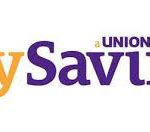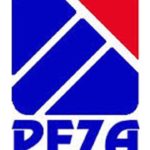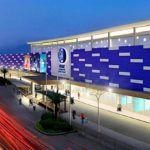
Bus Rapid Transit
By Boo Chanco (The Philippine Star)
Updated March 22, 2017 – 12:00am
http://www.philstar.com/
Maybe the BRT has more in common with the pre-World War 2 “tranvia” or street car. I am told this was the prime mass transit system in the ’30s and reached as far as Antipolo. Indeed, the Japanese consultant working on our rail projects observed we had more operating rail lines in the ’30s than today.
I suppose the reason we are even considering the BRT in Metro Manila is that it is theoretically the easiest to put in service. A BRT is nothing more than buses, and because they are tethered to a power line, they cannot move in and out of their assigned lane the way our buses now do.
Some years ago, the city of Xiamen in China wanted to have a system similar to our MRT/LRT. They were so eager so they started building the overhead infrastructure even without the needed clearance from the planners in Beijing.
They didn’t get the clearance, but they already had the elevated concrete superstructure. They decided to run a BRT system on it and it worked too. They eventually got the permission to build a subway, but the elevated BRT will continue to serve the city.
The BRT was said to have been “invented” in Bogota, Columbia. But what is really there to invent? It is simple and I guess, less expensive to operate than our MRT 3. We could have built the BRT “cars” right here, given the expertise of our local jeepney and bus body builders.
It appears to be the system of choice when cities first think about having a mass transport system. I saw a BRT operating in Urumqi, the capital city of Xinjiang province in China’s northwest. Again, it seems to work for a city with a growing population but not yet as large as ours in Metro Manila.
The World Bank’s Board of Executive Directors has announced it has approved funding for the first BRT system in Metro Manila. About 300,000 commuters will be served daily along España and Quezon Avenue.
The Metro Manila BRT Line 1 Project will cost $109.4 million, of which $64.6 million will come from the World Bank and the Clean Technology Fund (CTF). The Philippine government will provide funding equivalent to $44.8 million. The project will also develop support infrastructure along the España-Quezon Avenue route, including bus terminals and stations, segregation barriers, sidewalks, warning and direction signs, and pedestrian crossing facilities, among other facilities.
The project will be implemented by the Department of Transportation (DOTr) in coordination with the local governments of Manila and Quezon City. The Manila BRT Line 1 is expected to be operational by 2020.
This is not the first time our transportation officials have planned to have a BRT system. The World Bank also financed a BRT for Cebu that was supposed to be operational by last year. But the Roxas-Abaya DOTC failed to implement the project. It is still a dream up to now.
The España-Quezon Avenue route was supposed to be served by an LRT system, a PPP project to be undertaken with a Malaysian company. Costing $1 billion, an MOU was signed last year in Kuala Lumpur during a visit of President Duterte.
It was an initiative of the Philippine company A. Brown and its Malaysian counterpart East-West Rail Transit Corp. DOTr has not responded to my queries on the status of this proposal as it seems to compete with the World Bank funded BRT.
They are also talking about a BRT system for EDSA, but transportation experts I have talked to are not sure it will work, given the number of buses and bus companies that will be displaced. On the Quezon Ave. route, it will be jeepneys that will be displaced. Apparently, the JDs and Yujuico transit buses we used to take as students at UP no longer run that route.
A transportation consultant familiar with World Bank requirements pointed out that there are two minimum conditions for BRT to work as intended: 1) unified operation, which foreign consultants of World Bank equate with a single operator (invariably, government-owned), 2) exclusive lane/busway, preferably inner lanes.
The World Bank will also likely require us to import expensive new buses that fit their pre-conceived specifications, e.g., low-floor, dual side doors on both sides of the vehicle, etc). If implemented on EDSA, the exclusive lanes and stations (ala MRT) will entail massive modifications of roadways and flyovers (in Cubao, Ortigas, Shaw, Magallanes, Taft Avenue, Quezon Blvd., Monumento).
DOTr claims they now have a work program for the Metro Manila BRT Project. “We are to bid out the detailed engineering design (DED) and construction supervision, target September this year. The TOR and agency estimate are under review and are due for submission to BAC this March.
“DED will take about one year preparation. The work details will be established in coordination with our design consultants. Then civil works construction follows (two years construction period). This means the project can be operational by February 2020.”
DOTr also claims they are working with current bus operators for the BRTs. It was previously claimed that dealing with the bus operators was one of the main reasons they need emergency powers.
“Early consultations with stakeholders (operators and drivers) are being conducted and these are ongoing activities. In fact some of them are scheduled to do a study tour in Guangzhou, China where a BRT system is operating successfully. Some of them are already talking to possible suppliers of BRT buses as they also would like to be informed on how the new bus system would work.”
It is too early to get excited, but we are anxious to see if DOTr can move fast on this one as they are promising.









